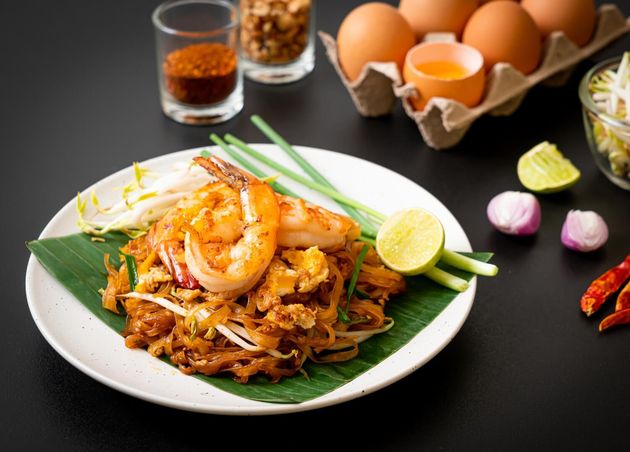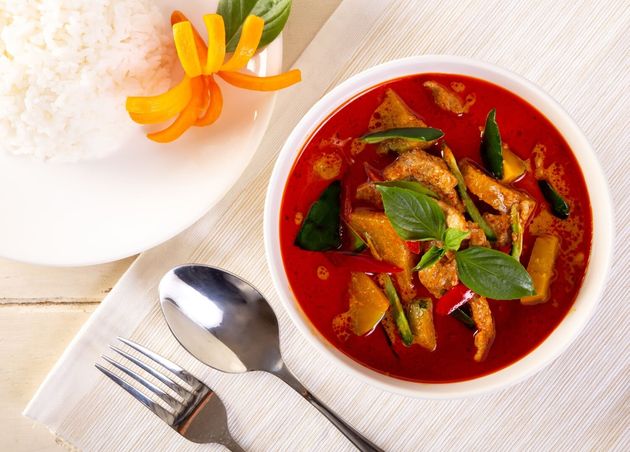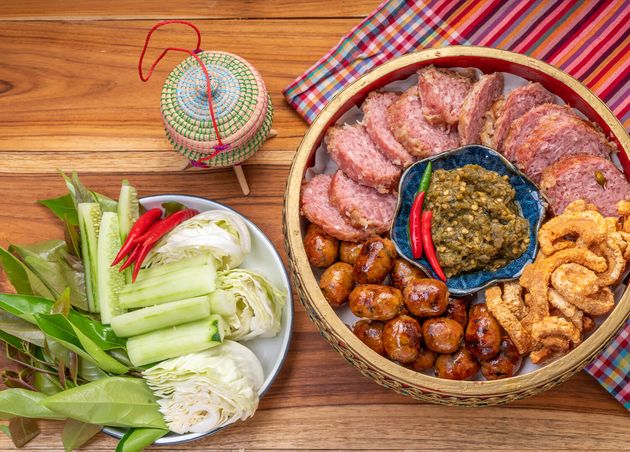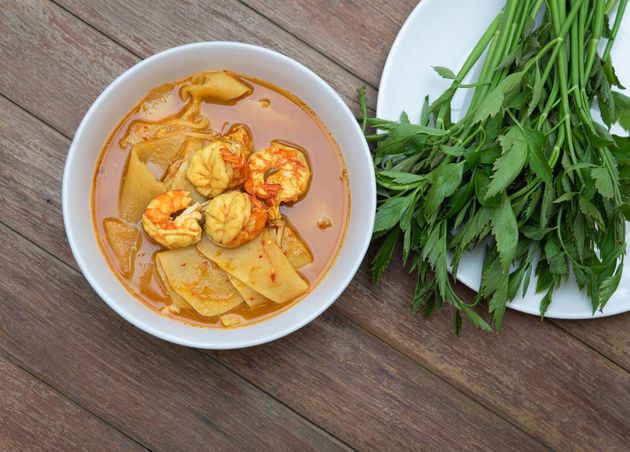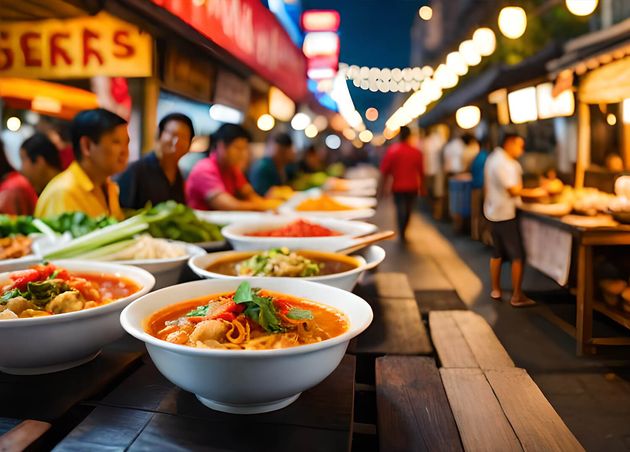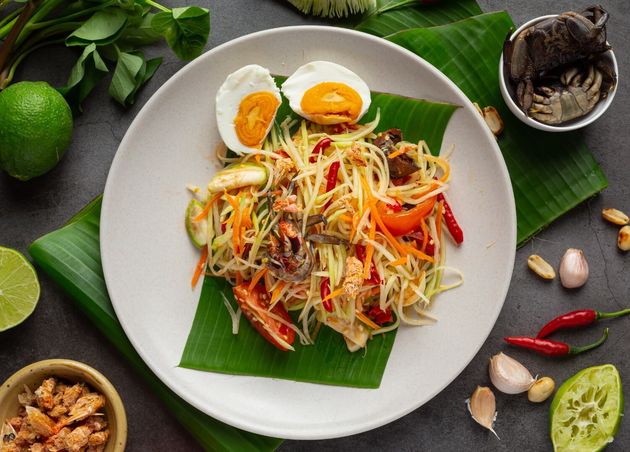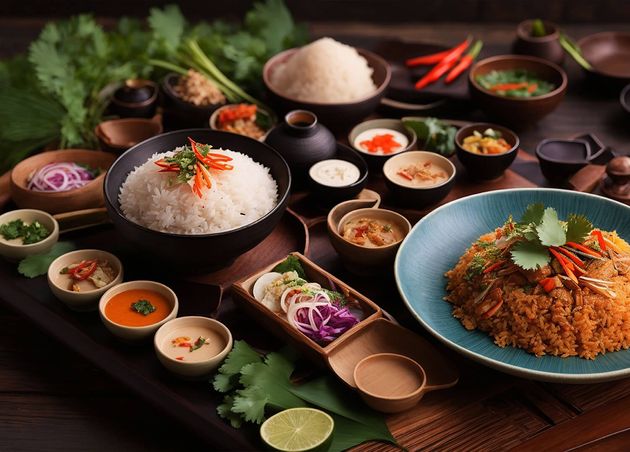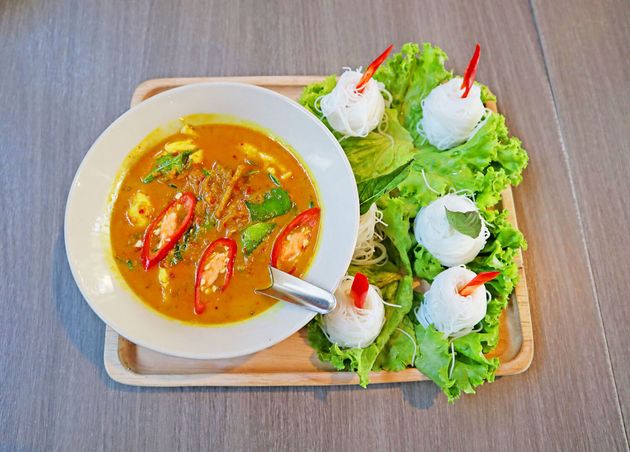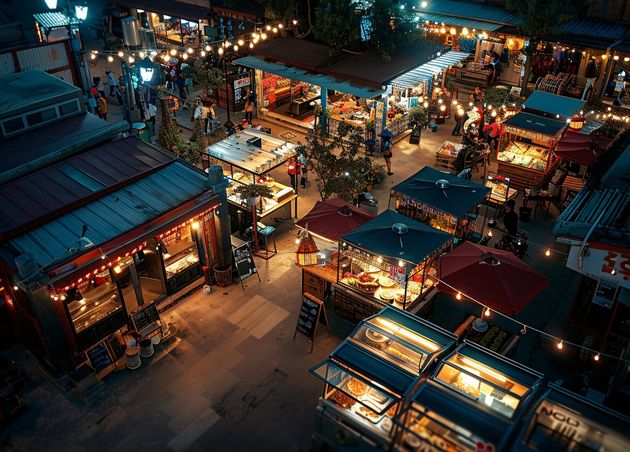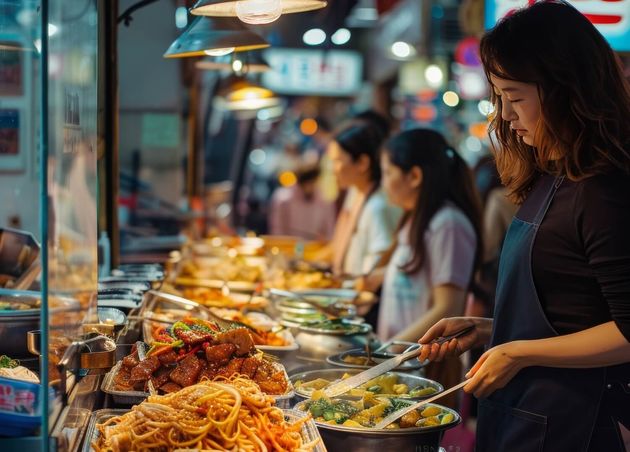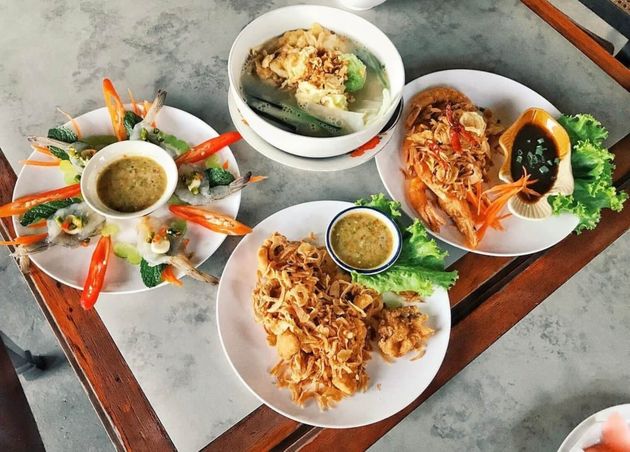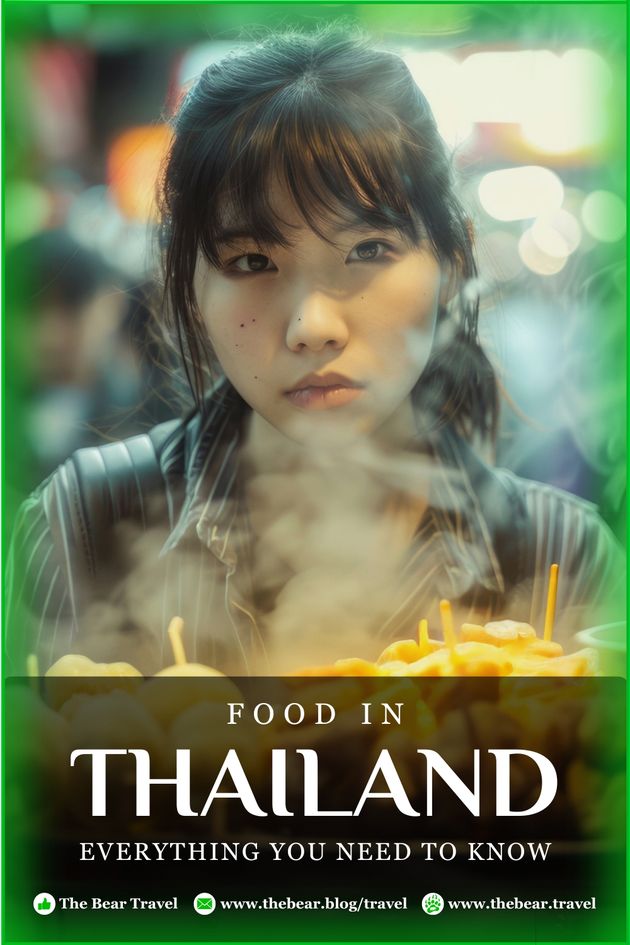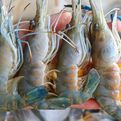Food in Thailand Guide: Everything You Need to Know
Hey there, fellow food lovers! Hungry Bear here. Let me share with you that as a Thai local, there's nothing I love more than exploring the world through my taste buds—especially when it comes to Thai cuisine! 🇹🇭 Oh, before we continue, why don't you first check out my other blog right here to give you a general idea of our own local cuisine: Experience Thai Cuisine: Top 10 Must-Try Dishes in Thailand!
I know what you're thinking: Everyone loves Thai food, right? Absolutely! But its magic goes way beyond just "pad thai" and "green curry." Thai cuisine is an explosion of flavors, textures, and aromas, constantly evolving with regional specialties and hidden food gems waiting to be discovered.
Ready to begin a delicious adventure? My complete guide will truly be your passport to the world of Thai food. We'll look into the unique ingredients, regional specialties, and even some local dining customs to transform you from a curious tourist into a true foodie adventurer 🤤
So, are you prepared to entice your taste buds and experience Thai cuisine like a local with me? Well, then, let's get started!
🇹🇭 Hungry Bear Trivia:
Did you know that sharing is a cornerstone of Thai dining culture? Many dishes are meant to be enjoyed family-style, served in large communal bowls for everyone to dig into. This creates a wonderful sense of togetherness and allows you to taste various flavors during your meal.
🐻 Bear Outline
An Overview of Our Local Thai Cuisine
Now that your taste buds are quivering with excitement, let me give you a glimpse into the delectable world of Thai food! As a UX designer, I'm all about user experience, and trust me, Thai cuisine is an experience that is truly unlike any other.
Every single bite is a symphony of sweet, sour, salty, and spicy, celebrating fresh ingredients and generations of culinary tradition. Thai cuisine, like Thailand itself, is a vibrant blend of flavors, textures, and aromas.
- Freshness First
- Think bustling markets overflowing with lemongrass, chilies, fragrant herbs, and tropical fruits – the foundation for countless flavor combinations.
- Think bustling markets overflowing with lemongrass, chilies, fragrant herbs, and tropical fruits – the foundation for countless flavor combinations.
- A Bounty of Dishes
- Dive into curries—yellow, red, green—each a flavor adventure. Slurp up noodles in all forms, from the classic pad Thai to refreshing glass noodle salads. Explore regional specialties—fiery southern curries and refreshing northern salads.
- Dive into curries—yellow, red, green—each a flavor adventure. Slurp up noodles in all forms, from the classic pad Thai to refreshing glass noodle salads. Explore regional specialties—fiery southern curries and refreshing northern salads.
- A Culinary Melting Pot
- Thai cuisine's rich tapestry is thanks to influences from its neighbors over 3,000 years (think Malaysia, Indonesia, India, Vietnam, Cambodia, Laos, Myanmar, and China!).
- Thai cuisine's rich tapestry is thanks to influences from its neighbors over 3,000 years (think Malaysia, Indonesia, India, Vietnam, Cambodia, Laos, Myanmar, and China!).
- Dining Like a Local 🇹🇭
- Thai meals are for sharing! Dig in family style and embrace the culture by trying to eat with your right hand (well, if it's convenient, and of course, a spoon is optional for curries!). Take it easy, relish the flavors, and enjoy the company.
Exploring Thailand's Regional Delights
Well, I know! I've whet your appetite with the basics of Thai cuisine, but the real magic lies in its regional variations! Thailand's rich history and diverse geography have resulted in a unique culinary landscape across its four main regions: North, South, Northeast (Isaan), and Central.
- Northern Delights
- Think Burmese and Lao influences – fragrant curries brimming with herbs and spices, like the creamy Kaeng Hang Lay Tai (northern Thai curry) and Sai Ua, a unique northern Thai sausage.
- Think Burmese and Lao influences – fragrant curries brimming with herbs and spices, like the creamy Kaeng Hang Lay Tai (northern Thai curry) and Sai Ua, a unique northern Thai sausage.
- Isaan's Fiery Feasts
- Get ready for a taste explosion! Isaan cuisine is actually known for its bold flavors, with chilies and fermented ingredients taking center stage in dishes like Som Tam (ส้มตำ, Thai papaya salad) and Nam Jim Jaew (น้ำจิ้มแจ่ว, Thai Chili Dipping Sauce) for grilled meats.
- Get ready for a taste explosion! Isaan cuisine is actually known for its bold flavors, with chilies and fermented ingredients taking center stage in dishes like Som Tam (ส้มตำ, Thai papaya salad) and Nam Jim Jaew (น้ำจิ้มแจ่ว, Thai Chili Dipping Sauce) for grilled meats.
- Southern Sunshine
- Coconut milk reigns supreme in the south, lending richness to fragrant curries like Massaman Curry and seafood dishes. Think creamy curries and lighter, refreshing dishes perfect for the hot climate.
- Coconut milk reigns supreme in the south, lending richness to fragrant curries like Massaman Curry and seafood dishes. Think creamy curries and lighter, refreshing dishes perfect for the hot climate.
- Central Thailand's Classics
- Aside from finding me here 😉, you'll also discover the iconic dishes most commonly associated with Thai food—pad thai (ผัดไทย), Thailand's national dish; fragrant curries like green and red curry; and kuaitiao ruea (ก๋วยเตี๋ยวเรือ, Thai boat noodles). The focus here is on balance, representing all four flavor profiles (sweet, sour, salty, and spicy).
Each region offers a unique adventure for your taste buds. So, the next time you plan a trip to Thailand, consider venturing beyond Krung Thep Maha Nakhon (Bangkok) and exploring the culinary gems each region has to offer!
Must-Try Famous Dishes in Thailand
I must say, Thailand's culinary scene is a treasure trove waiting to be explored! So, here are some must-try popular options to tantalize your taste buds:
#1 Curries: A Symphony of Flavors
As mentioned earlier, Gaeng (curry) is a cornerstone of Thai cuisine. While red, green, and yellow curries are widely available, each region boasts its own unique twist.
- Kaeng Kari (แกงกะหรี่) / Kaeng Lueang (แกงเหลือง, yellow curry) is a versatile curry that can range from mild to fiery, often featuring a delightful balance of sweet, sour, and savory notes; depending on the region, you may find variations that emphasize different flavor profiles, making it a unique experience with each bowl.
- Gaeng Daeng (แกงแดง, red curry) is a staple in Thai kitchens, renowned for its rich and savory profile, characterized by its bold and spicy flavors, primarily from the red chilies used in the curry paste. Perfect for those who enjoy a hearty and intense taste experience, Gaeng Daeng is often paired with tender meats and fresh vegetables that complement its robust flavor.
- Gaeng Keow Wan (แกงเขียวหวาน, green curry) is a vibrant Thai curry celebrated for its fresh, zesty flavor. The green curry paste, made with green chilies, garlic, and aromatic herbs, is simmered in creamy coconut milk, creating a harmonious blend of heat and richness. The dish often includes tender proteins and vegetables like eggplants and bamboo shoots, resulting in a complex flavor profile that balances spiciness with a hint of sweetness.
- Khao Soi (ข้าวซอย, Thai Coconut Curry Noodle Soup) is a deliciously rich, creamy, slightly spicy yellow curry noodle soup originating from Northern Thailand. It is a must-try for its unique blend of flavors and textures, as it features boiled and fried egg noodles in a coconut curry broth, typically served with chicken or beef and garnished with pickled mustard greens, shallots, lime, and crispy noodles.
#2 Beyond the Classics
Thailand's culinary tapestry extends far beyond familiar dishes. Here are a few regional specialties to add to your foodie bucket list:
- Laab Moo Isan (ลาบหมูอีสาน, Thai Isan-Style Minced Pork Salad) is a Northeastern signature dish that is a spicy and refreshing salad traditionally made with minced meat (pork, chicken, or fish), herbs, and chilies.
- Pad Kra Pao Moo (ผัดกะเพราหมู, Stir-Fried Thai Basil & Pork) is a beloved dish that features minced pork stir-fried with garlic, chilies, and Thai holy basil. It is often served with a fried egg on top. It’s a quick and flavorful option that is enjoyed at any meal.
- Khao Pad (ข้าวผัด, Thai Fried Rice, Thai Fried Rice) is a dish that combines rice, vegetables, and your choice of protein, seasoned with soy sauce and spices, making it a satisfying and versatile option. It is certainly a crowd-pleaser
#3 Sweet Treats
We can't forget dessert! Thailand is a haven for sweet tooth, too (like me! 😉), offering a delightful range of options.
- Khao Niao Mamuang (ข้าวเหนียวมะม่วง, Mango Sticky Rice) is an iconic dessert and the King of Thai desserts that features sweet sticky rice soaked in coconut milk, topped with slices of ripe mango and coconut syrup. It's a must-try for anyone visiting Thailand.
- Bua Loi / Bua Loy (บัวลอย, Rice Balls in Coconut Milk) is a comforting dessert consisting of colorful sticky rice flour balls served in warm coconut milk. The combo of sweet and creamy flavors makes it a delightful end to any meal.
Street Food Culture of Thailand
I'm not trying to be biased 😉 but our Thai street food is legendary and for good reason. Usually, in the evening, when fun and magic happen, the streets come alive with sizzling woks, fragrant curries, and friendly vendors.
It's a sensory overload in the best way possible, and it's not just about the delicious (and affordable!) food – it's a window into the heart of our Thai culture.
Must-Try Thai Street Food
I know, I know, you're ready to dig in! Here are some of my all-time favorite street food dishes to get your taste buds tingling:
- Pad Thai (ผัดไทย, Stir-fried Noodles) is the undisputed champion of Thai street food. This stir-fried noodle dish is a symphony of sweet, savory, and tangy flavors. It usually features rice noodles, eggs, vegetables, and your choice of protein. It's a classic for a reason!
- Som Tam (ส้มตำ, Thai Papaya Salad) is a revitalizing and colorful salad made with shredded papaya, vegetables, chilies, and a unique fish sauce dressing. Prepare for spiciness and a flavor explosion! A must-try for spice enthusiasts.
- Tom Yum Goong (ต้มยำกุ้ง, Hot & Sour Shrimp Soup) is known as a fragrant and spicy soup that is considered by most a national treasure. Think aromatic lemongrass, kaffir lime leaves, and succulent shrimp swimming in a perfectly balanced broth. Heaven in a bowl!
- Khao Pad (ข้าวผัด, Thai Fried Rice) is a crowd-pleaser with its familiar flavors and a Thai twist. It's a delicious and budget-friendly option full of your favorite protein and veggies.
Popular Exotic Foods on Thai Streets
Now, for the interesting part, which most of you are waiting for 😝 Thailand also offers a range of exotic and adventurous street food options for the more daring eaters. Here are some popular exotic Thai street foods to explore:
- Insects: Thailand is famous for its wide variety of edible insects, which are a crunchy and protein-packed snack. Common options include Jing Reed (จิ้งหรีด, fried crickets), Tak Ka Tan (ตั๊กแตน, fried grasshoppers), and Rot Duan (หนอนไม้ไผ่ หรือ รถด่วน, bamboo worms). These insects are often seasoned with spices and served as appetizers or drinking snacks, providing a unique culinary experience.
- Exotic Meats: For the adventurous eater, Thai street food features exotic meats like crocodiles, snakes, and even scorpions. Crocodile meat, often grilled or fried, has a chicken-like texture and a subtle flavor, making it an intriguing option for those looking to try something different. One popular dish is a spicy snake meat soup offering a bold local cuisine taste.
- Organ Meats: Thai cuisine embraces organ meats, and street vendors sell dishes that include offals. Moo Ping (หมูปิ้ง, Thai Grilled Pork Skewers) often feature marinated pork that may include liver or intestines, while sticky rice with braised pork belly can include blood cubes for added richness. These dishes provide a deeper insight into traditional Thai cooking and flavors.
🐻 Insider Tips:
- Don't be afraid to get a little adventurous! Most street vendors are happy to explain their dishes and adjust spice levels to your preference.
- Embrace the communal dining experience. Many locals share dishes, so grab a group and try a little bit of everything!
- Carry cash for street vendors, but many restaurants accept cards and electronic payment transfers.
Veggie Heaven in Thailand
Calling all vegetarians and vegans! Thailand might be famous for its fragrant curries, sizzling stir-fries, and exotic street food scene, but fret not, plant-based foodies; there's a world of deliciousness waiting for you, too, and Hungry Bear, yours truly will now share it with you 🥳
🐻 Insider Tips for Veg Travelers
As a local, I know navigating vegetarian and vegan options in Thailand can have its quirks. Here's some lowdown to ensure a smooth and delicious culinary adventure:
- The Egg Factor: Unlike the West, Thai vegetarian dishes often include eggs. This is especially common in pad thai, where scrambled eggs add a delightful fluffy texture. If you're vegan, be sure to politely ask: "Chan kin jay ka" (ฉันกินเจค่ะ, "I eat vegan," for women) or "Chan kin jay krap" (ฉันกินเจครับ, "I eat vegan" for men) and "mai sai khai ka/krap" (ไม่ใส่ไข่, "no eggs") when ordering.
- Oil Check: Many stir-fried dishes use oyster or fish sauce for extra umami. To avoid hidden animal products, ask "sai nam mang phet ka/krap" (ใส่ น้ำมัน ผัด, "use vegetable oil") when placing your order. Most restaurants and vendors are happy to accommodate your dietary needs.
- Fishy Business: Fish and oyster sauce are flavor powerhouses in Thai cuisine but are not vegan-friendly. Look out for restaurants displaying the "เจ" (jay) symbol, which indicates vegan options. This is especially helpful at street vendors, where menus might not be in English.
- Vegetarian Oasis: Don't despair! Vegetarian restaurants and stalls are readily available across Thailand. Look for the tell-tale yellow flags or the word "mangsawat" (มังสวิรัติ, "vegetarian") on signs. Many tourist areas and cities cater to vegetarian travelers, with a growing number of vegan-friendly cafes and restaurants popping up.
- Sustainable Eats on the Rise: Sustainable tourism is gaining traction in Thailand, and many accommodations are becoming more vegan-friendly. Don't hesitate to ask your hotel or guesthouse about vegan meal options or nearby restaurants catering to plant-based diets.
🐻 Reminder: Remember that a friendly smile and a polite "chan kin jay" (I eat vegan) go a long way in Thailand. Most people are happy to help you find delicious and suitable options.
Our Secret Weapons: Thai Ingredients
As someone who has explored the corners of Thailand's bustling street food markets and the elegance of its top-tier restaurants, I've always been fascinated by the rich complexity of Thai cuisine.
The true charm of Thai food lies in its remarkable blend of flavors—sour, sweet, bitter, and salty—all harmoniously dancing on your palate, courtesy of its magical ingredients. Let’s unravel these secret elements that make Thai food a global favorite.
The Foundation of Flavor: Key Thai Ingredients
- Chili: From mild to fiery hot, chilis are the heartbeats of Thai cuisine. They introduce iconic spice levels that can be tailored to any palate, igniting a fiery passion in each bite.
- Coconut Milk: Creamy and rich, coconut milk softens the sharp spikes of chili heat and adds a velvety texture to curries and desserts. Its soothing melody balances the zest in Thai cooking.
- Curry Paste: Whether red, green, or yellow, Thai curry pastes are meticulously pounded mixtures of herbs, spices, and aromatics that instantly add depth and complexity to dishes.
- Fish Sauce: This quintessential Thai condiment is the backbone of umami in many dishes. Made from fermented fish, its pungent aroma belies its ability to subtly enhance the overall savoriness without overpowering the dish.
- Garlic: No Thai kitchen is complete without garlic. It’s the first layer of flavor in the pan, sizzling until golden, ready to mingle with other ingredients and create something truly magical.
- Ginger: Known for its medicinal qualities, ginger brings a warm, spicy bite. It’s essential in many Thai soups and curries, providing a grounding, peppery base.
- Herbs: From basil to cilantro, Thai herbs are more than garnishes; they are integral to the flavor profile, adding fresh, aromatic bursts that cleanse the palate and enhance taste.
- Lemongrass: With its lemony scent and a hint of ginger, lemongrass adds a fragrant freshness that elevates the aroma of dishes. It’s often the secret whisper of zest in your favorite curry or soup.
- Lime: The zest and juice of lime cut through the richness and add a refreshing burst of citrus, vital for the balance in flavors. It’s not just a garnish; it’s an essential splash of freshness.
- Rice: The staple grain of Thailand, rice is the comforting base of nearly every meal, perfect for soaking up rich flavors and sauces.
- Vinegar: Often used in dipping sauces and pickles, vinegar adds a tangy punch that brightens dishes and provides a counterpoint to sweetness and heat.
What is the Dining Etiquette of Thailand?
Food is a major part of every culture, and in my dear country, Thailand, dining is a social and cultural experience that goes deep with tradition and respect.
As a Thai local and an avid food enthusiast, I've had countless meals where the joy of eating goes hand in hand with the pleasure of sharing and respecting our rich traditions. Let me share some insights into how you can dine like a local and truly enjoy the delightful Thai cuisine.
- Utensil Usage
- First things first, when you sit down to enjoy a delicious Thai meal, remember to put away the chopsticks unless you’re having noodles.
- In Thailand 🇹🇭, we mostly use a spoon and fork. I love how the spoon is perfect for savoring every bite while the fork helps nudge food onto the spoon. It’s such a simple yet effective way to appreciate our dishes' incredible variety of textures and flavors!
- First things first, when you sit down to enjoy a delicious Thai meal, remember to put away the chopsticks unless you’re having noodles.
- Communal Dining
- One of my favorite things about dining in Thailand is our communal spirit. Sharing food is a cherished tradition here, making every meal feel special.
- Picture this: "Dishes filled with vibrant colors and enticing aromas placed in the center of the table, inviting everyone to take small portions and savor a bit of everything." - it’s a wonderful way to bond and experience the meal together!
- Just keep in mind to act with grace and consideration while serving yourself from the shared plates; it’s all about harmony and respect for one another.
- One of my favorite things about dining in Thailand is our communal spirit. Sharing food is a cherished tradition here, making every meal feel special.
- Finishing Your Meal
- In our culture, leaving food on your plate indicates that you may haven't enjoyed the meal. This belief encourages us to take only what we can eat and to finish our portions, which helps reduce waste.
- I find it beautiful that this practice reflects our sincere respect for the food and the host. It’s a lovely reminder to appreciate every bite!
- In our culture, leaving food on your plate indicates that you may haven't enjoyed the meal. This belief encourages us to take only what we can eat and to finish our portions, which helps reduce waste.
- Expressing Gratitude
- Finally, expressing gratitude is something I'm always proud 🐻
- When you enjoy a meal, saying “arroy” (delicious) or “khob khun” (thank you) to your host or the chef truly makes a difference.
- These small gestures of appreciation create a warm and positive atmosphere, making every dining experience even more memorable.
- I always feel that a simple thank you can elevate the entire meal! 🙏
- Finally, expressing gratitude is something I'm always proud 🐻
As someone who loves good food and the joy it brings, I can tell you that dining in Thailand is more than just eating—it's about connecting, sharing, and appreciating the beauty of our culture. So, come with an open heart and a hearty appetite, and you'll fall in love with Thai cuisine just like I did 🐻
Thailand Food Events You Don't Want to Miss!
Whether you’re a seasoned foodie or a curious traveler, Thailand's annual festivals can tantalize your taste buds and create lasting memories like no other. These events celebrate flavors, culture, and community, offering a unique opportunity to dive into Thai culinary traditions.
While the dates and programming may vary from year to year, I'm sharing with you a curated list of just some food events that you absolutely shouldn’t miss:
#1 Annual Food Festivals
- Chiang Mai Food Festival
- This food festival in Chiang Mai showcases Northern Thai specialties like Khao Soi ((ข้าวซอย, Thai Curry Noodle Soup) and Sai Ua, along with cooking demonstrations and competitions that are sure to delight any food enthusiast.
- This food festival in Chiang Mai showcases Northern Thai specialties like Khao Soi ((ข้าวซอย, Thai Curry Noodle Soup) and Sai Ua, along with cooking demonstrations and competitions that are sure to delight any food enthusiast.
- Thai Food Festival
- A grand celebration of Thai cuisine that gathers talented chefs and food vendors from across the country, allowing you to try a wide variety of dishes, including regional favorites that highlight the diversity of Thai flavors.
- A grand celebration of Thai cuisine that gathers talented chefs and food vendors from across the country, allowing you to try a wide variety of dishes, including regional favorites that highlight the diversity of Thai flavors.
- Vegetarian Festival
- Celebrated in various locations, this event features a strict vegetarian diet observed by local communities, complete with colorful parades and a plethora of delicious vegetarian food that even meat lovers will love.
#2 Street Food Festivals
- Street Food Festival
- These festivals transform local streets into vibrant food markets, showcasing the best of Thai street food. It's a feast for the senses, capturing the essence of our country's beloved street food culture.
- These festivals transform local streets into vibrant food markets, showcasing the best of Thai street food. It's a feast for the senses, capturing the essence of our country's beloved street food culture.
- Krabi Street Food Festival
- Celebrating local seafood and traditional Thai desserts, these street food festivals in Krabi often feature live music and cultural performances while indulging in the region's culinary delights.
#3 Gourmet Events
- World Gourmet Festival
- Usually, it is a week-long celebration of fine dining that features Michelin-starred chefs and exclusive dining experiences and is perfect for those who appreciate gourmet cuisine.
Food Safety Tips When in Thailand
Navigating Thailand's vibrant and diverse food scene can be an exhilarating experience. Still, keeping a few safety tips in mind is essential to ensure your culinary adventures are both delicious and safe.
From my experience, here are some essential food safety tips when in Thailand 🇹🇭
- Tread Lightly with Spicy Foods
- Thai cuisine is renowned for its bold and intense flavors, especially regarding spice. What’s considered mild in Thailand can be quite fiery for those unaccustomed to it.
- Specify your spice level when ordering if you're not used to spicy foods. You can say the following to indicate your desired spicy level, but remember that beginning with tastier dishes and advancing steadily is always a good approach! 🐻
- "mai phet" (ไม่เผ็ด)
- To indicate that you want it not spicy
- To indicate that you want it not spicy
- "phet noi" (เผ็ดน้อย)
- To indicate that you want it a little spicy
- To indicate that you want it a little spicy
- "phet glang" (เผ็ดกลาง)
- To indicate that you want it a medium spicy
- To indicate that you want it a medium spicy
- "phet phet" (เผ็ดเผ็ด)
- To indicate that you want it spicy
- Be cautious, as it may be hotter than you expect.
- "phet maak" (เผ็ดมาก)
- To indicate that you want it very spicy
- "mai phet" (ไม่เผ็ด)
- Thai cuisine is renowned for its bold and intense flavors, especially regarding spice. What’s considered mild in Thailand can be quite fiery for those unaccustomed to it.
- Choose Local Specialties Wisely
- While Thailand has incredible seafood, it's best to focus on local specialties, especially in areas far from the coast.
- Opt for dishes that highlight local ingredients and cooking styles, such as curry noodle soup or Northern Thai sausage, rather than seafood that may not be as fresh.
- While Thailand has incredible seafood, it's best to focus on local specialties, especially in areas far from the coast.
- Stay Hydrated Safely
- Tap water in Thailand is not always safe to drink, so it's best to stick to bottled water, which is easily available and affordable.
- When buying beverages from street vendors, ensure they use bottled or boiled water.
- To contribute to sustainability and reduce plastic waste, consider carrying a reusable water bottle and just refilling it at convenient locations like convenience stores, cafes, or hotels. This not only helps the environment but also saves you money.
- Tap water in Thailand is not always safe to drink, so it's best to stick to bottled water, which is easily available and affordable.
- Be Cautious with Ice
- While ice from reputable vendors is generally safe, it's wise to avoid ice from questionable sources. If you're unsure, stick to bottled drinks without ice.
- Mind Your Allergies
- Thai food often contains a variety of ingredients that might be unfamiliar. If you have food allergies, communicate this clearly when ordering.
- Learning a few phrases in Thai related to your allergies can be very helpful. For example, if you're allergic to peanuts, you can say, “phom pae thua” (ผมแพ้ถั่ว) for men or “chan pae thua” (ฉันแพ้ถั่ว) for women, meaning "I’m allergic to peanuts."
- Thai food often contains a variety of ingredients that might be unfamiliar. If you have food allergies, communicate this clearly when ordering.
- Communicating Dietary Restrictions
- If you have specific dietary needs, such as being vegan or vegetarian or avoiding certain ingredients, it's essential to communicate this clearly when ordering.
- Here are some useful Thai phrases:
- "Mai sai neua" (ไม่ใส่เนื้อ)
- "no meat"
- "no meat"
- "Mai sai pla" (ไม่ใส่ปลา)
- "no fish"
- "no fish"
- "Mai sai pak" (ไม่ใส่ผัก)
- "no vegetables"
- "no vegetables"
- "Mai sai nom" (ไม่ใส่นม)
- "no milk"
- "no milk"
- "Mai sai kratiem" (ไม่ใส่กระเทียม)
- "no garlic"
- "no garlic"
- "Mai sai hom" (ไม่ใส่หอม)
- "no onion"
- "no onion"
- "Mai sai neua" (ไม่ใส่เนื้อ)
-
Remember to add "ka" (for women) or "krap/khrub" (for men) at the end of your sentences to show politeness and respect.
- If you have specific dietary needs, such as being vegan or vegetarian or avoiding certain ingredients, it's essential to communicate this clearly when ordering.
- Observe Cleanliness
- When choosing where to eat, take a moment to assess the cleanliness of the food stalls or restaurants.
- Crowded stalls with a lot of food turnover are often a good sign, as they tend to keep ingredients fresh. Besides, it's usually a safer option if the place looks clean and well-maintained.
- When choosing where to eat, take a moment to assess the cleanliness of the food stalls or restaurants.
- Opt for Freshly Cooked Foods
- Street food is a cornerstone of Thai cuisine and offers some of the best flavors. Look for stalls where food is cooked fresh before you, ensuring it's hot and less likely to harbor harmful bacteria.
- Freshly prepared dishes like grilled meats and made-to-order curries are safe and delicious choices.
- Street food is a cornerstone of Thai cuisine and offers some of the best flavors. Look for stalls where food is cooked fresh before you, ensuring it's hot and less likely to harbor harmful bacteria.
- Don't Be Afraid to Try!
- Thai cuisine is approachable and fun to cook at home. Dive in, have fun, and enjoy the delicious results! Don't let unfamiliar ingredients intimidate you!
- With a few key staples and a willingness to experiment, you can create delicious Thai dishes. If you're interested, check out a few of my interesting articles for recipes and tips on:
- Thai cuisine is approachable and fun to cook at home. Dive in, have fun, and enjoy the delicious results! Don't let unfamiliar ingredients intimidate you!
🐻 Grand Finale: A Delicious Thai Food Adventure Awaits!
Well, foodies, we've reached the end of this whirlwind tour of Thai cuisine! From the secret magic of ingredients to the exciting street food and the cultural immersion of food events, you're now armed with this newfound knowledge and insider tips to navigate the delicious world of Thai food confidently.
Remember, our food in Thailand is all about an explosion of flavors, textures, and experiences. Embrace the spice (or go "mai phet" if you need to!), don't be afraid to try new things, and most importantly, savor every bite 🐻
My personally curated guide is just a starting point 🇹🇭 Thailand has endless culinary treasures waiting to be discovered, from hidden local gems to regional specialties. So, pack your bags, grab your spirit of adventure, and get ready to hop on a delicious journey through the Land of Smiles!
🐻 Vocabulary Time!
- Exotic
- แปลกใหม่, plaek mai
- CEFR Level: B1 (Intermediate)
- (adjective) foreign, unusual, or exciting, especially because of being from a distant country or place
- Cautious
- ระมัดระวัง, ramat rawang
- CEFR Level: B1 (Intermediate)
- (adjective) careful and attentive to avoid danger or harm
- Lemongrass
- ตะไคร้, takrai
- CEFR Level: A2 (Elementary)
- (noun) a tropical grass with a lemon-like scent, often used in cooking
- Tantalize
- ยั่วยวน, yaoyuan
- CEFR Level: B2 (Upper Intermediate)
- (verb) to excite or arouse interest or desire, especially in a teasing way
- Variation
- ความแตกต่าง, khwam taek taang
- CEFR Level: B1 (Intermediate)
- (noun) a change or slight difference in condition, amount, or level
📍Pin it!
Tle (Hungry Bear)
A designer and photographer by trade, Tle is obsessed with improving user experience and never accepts the status quo. She loves good food, enjoys experimenting with fusion cuisine, and can even taste the difference in fish varieties in Fish & Chips. A pro in hotels, lifestyle, holidays, and beyond, Tle loves exploring the world and is, of course, a tech enthusiast. As a UX researcher and future product developer by profession, she brings a fresh perspective to many things.
The Bear Travel | Experience like a Local
A fast-growing Thailand Travel Blog written by Expats and Thais since 2017. We will share our experiences and ideas from an insider point of view for you to create your own unique Thailand experience.
For the latest news and events about The Bear Travel, follow us on Facebook, Instagram, Twitter, Pinterest, or YouTube.
For any issues, concerns, or queries, don’t hesitate to CONTACT us.
Recommended for you
The Coffee Club Bangkok: Explore Your Happy Place Here!
Tle (Hungry Bear)
Challenges of Thai Shrimp Farming: Effective Strategies for Success
Riley Sinclair (Digital Aqua Bear)
Visit Thailand: The Complete Guide on Traveling Post-Pandemic
Dr. Theodore (Professor Bear)



